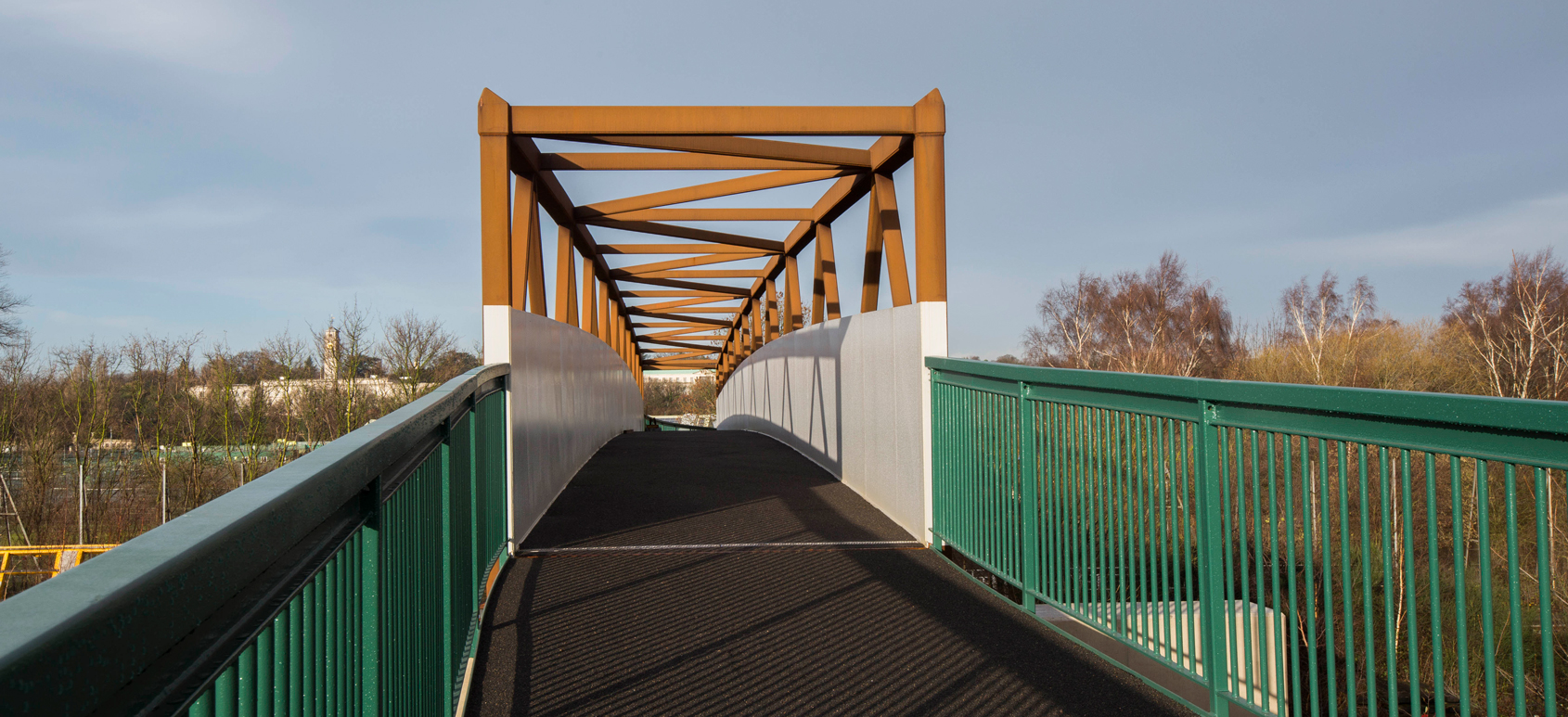The project was a success, with a key benefit being the use of weathering steel for the main structure, as it avoids the need for maintenance – and associated disruption – during the bridge’s designed ‘in service’ life.
Nottingham Enterprise Zone Footbridge
Bespoke design of a 50m footbridge featuring weathering steel main span and mild steel approach ramps
❯

